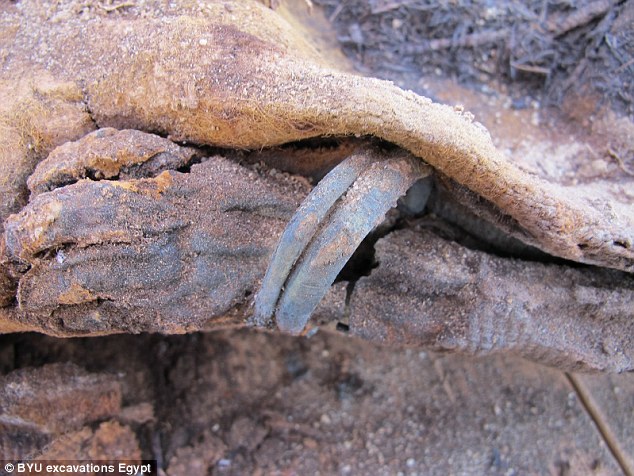A cemetery containing more than a million mummified human bodies has been unearthed in central Egypt, according to archaeologists.
Scientists have already excavated more than 1,700 mummies, preserved by the hot dry desert in the Faiyum region of Egypt about 60 miles (96km) south of Cairo.
But those leading the work believe their could be up to a million similar bodies buried in shafts cut into the limestone rock that are at times up to 75ft (22.9 metres) deep.
It is thought that the mummies were buried around 1,500 years ago, between the 1st and 7th Century AD, when Egypt was controlled by the Roman and Byzantine Empire.
Unlike many famous mummified remains discovered in Egypt, these were found in mass graves and appear to be ordinary citizens rather than royalty or other important figures.
Yet scientists are baffled about where the huge numbers of mummies came from - the remains of a nearby village is too small to warrant such a large cemetery and the nearest town, named Philadelphia after King Ptolemy II Phiadelphus, has its own burial sites.
Archaeologists have also uncovered a bizarre range of mummies, including one man who is more than seven feet (213 cm) tall.
They have also discovered that the mummies appear to be clustered together by hair colour, with those with blond hair in one area and all of those with red hair in another.
Professor Kerry Muhlestein, project director of the excavation at Brigham Young University, in Utah, said: 'We are fairly certain we have over a million burials within this cemetery. It's large, and it's dense.'
Although the Fag el-Gamous necropolis, which is named after a nearby road that translates as 'Way of the Buffalo', was first discovered nearly 30 years ago, archaeologists are still trying to piece together what they have found there.
Annual excavations at the site, on the eastern edge of the Faiyum region, near the city of Silah, regularly unearth mummified remains and Professor Muhlestein presented the latest discoveries at the Scholars Colloquim at the Society for the Study of Egyptian Antiquities last month.
Among the recent discoveries made last year were the mummified remains of a little girl aged around 18 months old, still with two bracelets on each arm.
Unlike royal Egyptian mummies, the people buried at Fag el-Gamous had few goods buried with them and were laid in the ground without coffins.
Their internal organs were also rarely removed, an important part of the mummification process, so it is the arid environment of the desert that is largely thought to have preserved the bodies.
However, with the latest discovery of the little girl, Professor Muhlestein said there appears to have also been some attempt by those who buried her to use the full mummification process.
Writing on the team's Facebook page, which Professor Muhlestein only recently updated in an attempt to keep the discoveries secret, said: 'This mummy was beautifully wrapped in a tunic and with other nice wrappings.
(dailymail.co.uk)
ANN.Az



Follow us !











